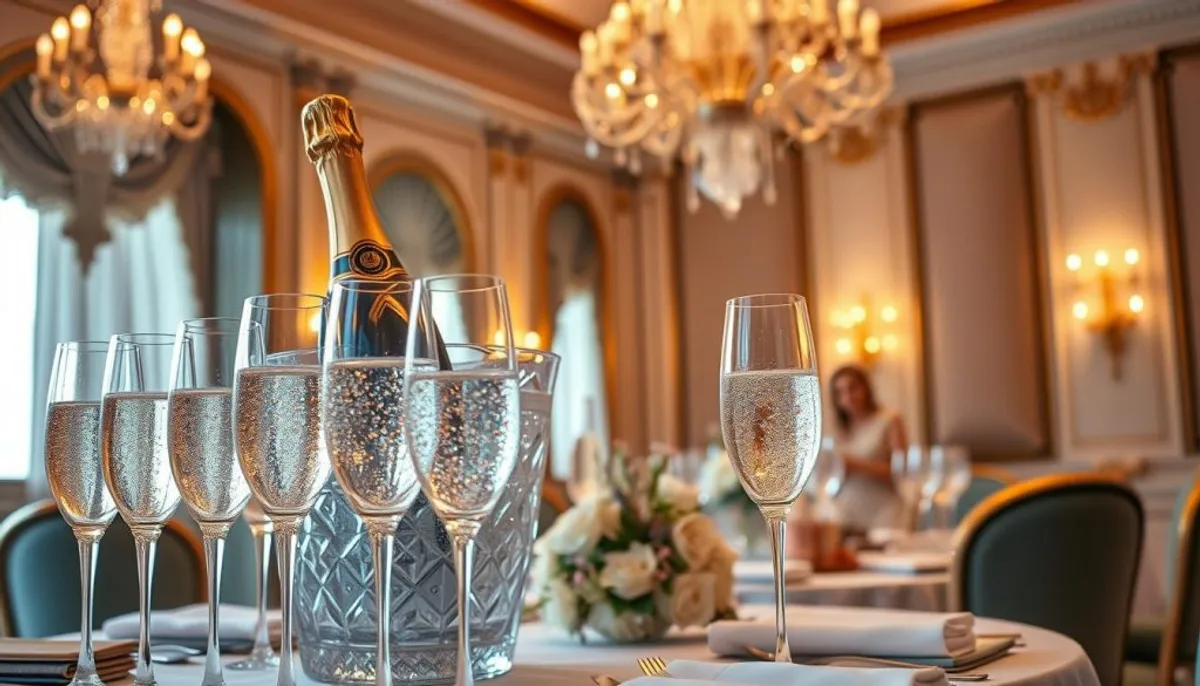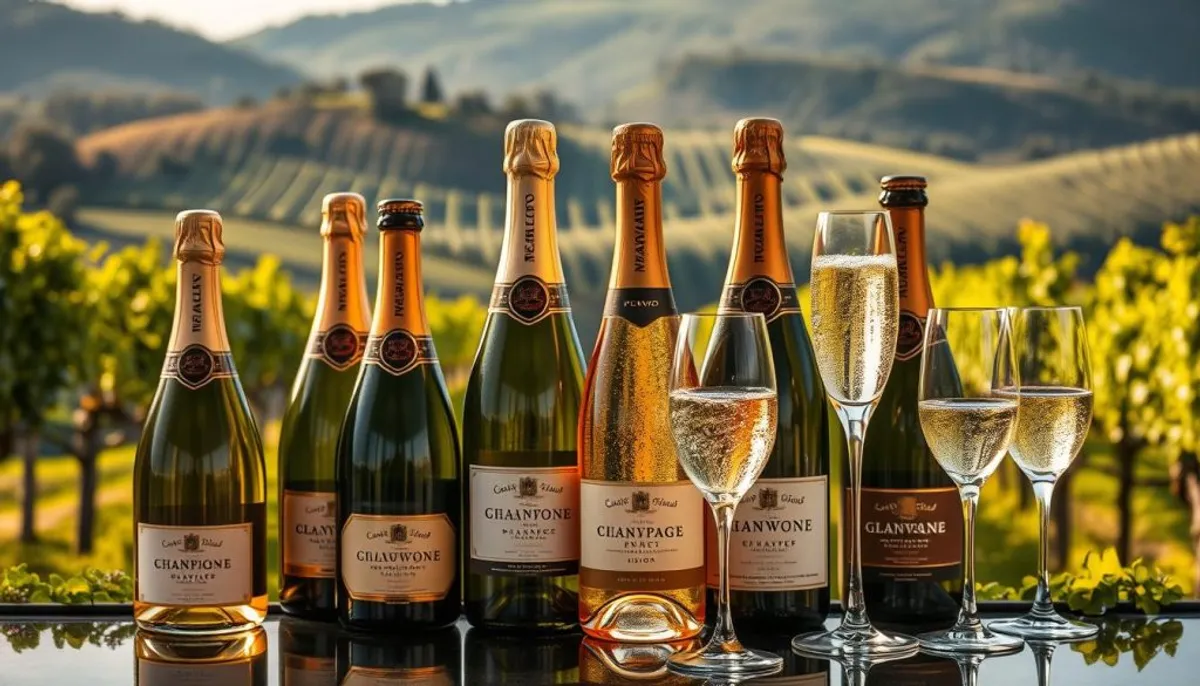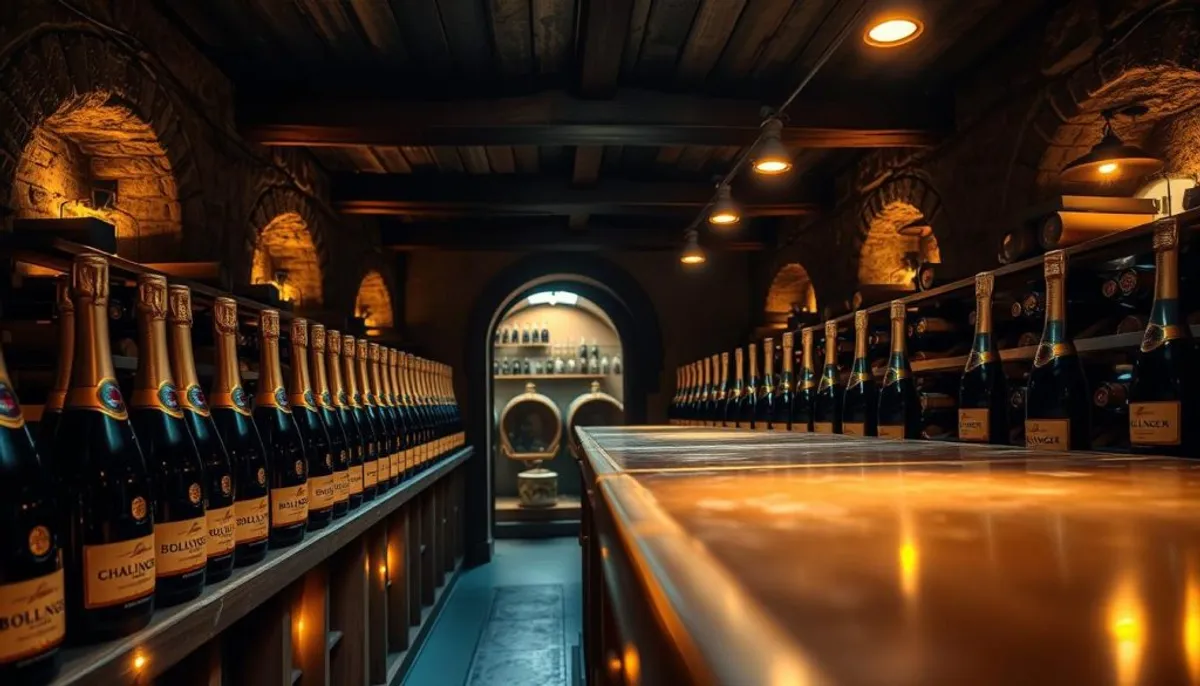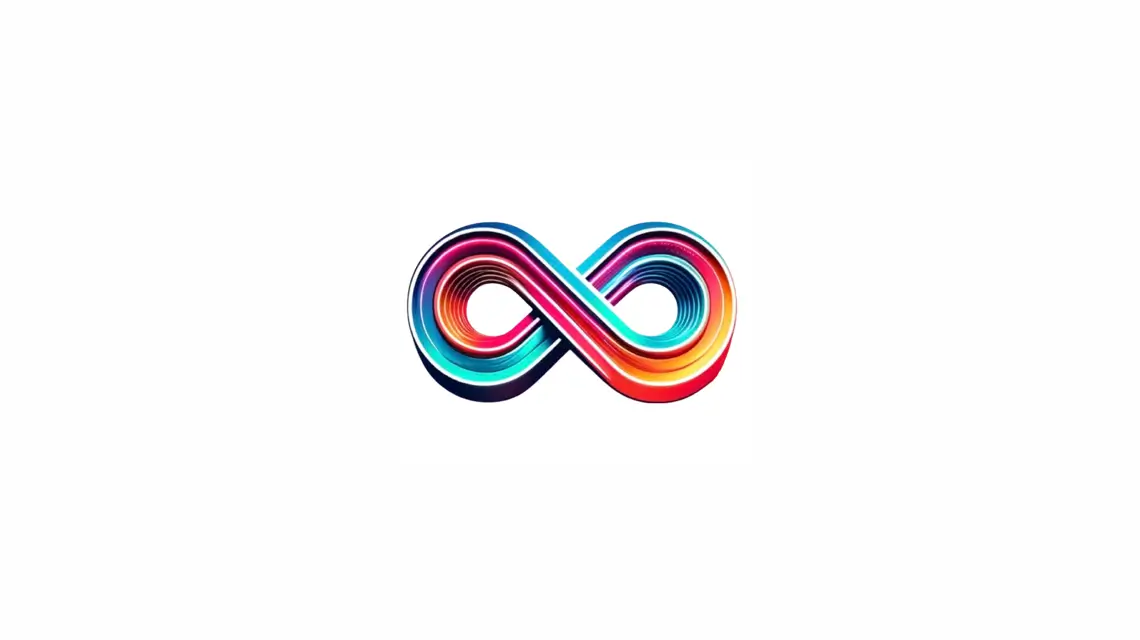Champagne, the pinnacle of premium sparkling wines, embodies luxury and celebration. Originating from the esteemed Champagne region in France, it transcends mere consumption. It represents sophistication and refinement, encapsulating tradition and excellence in every sip.
The realm of luxury champagne is expansive and diverse. With numerous top-tier champagne brands vying for recognition, selecting the ideal bottle can seem overwhelming. This guide aims to assist both seasoned connoisseurs and curious novices in exploring the finest bubbly.

In a typical year, Americans devour approximately 360 million glasses of champagne on New Year’s Eve. This staggering statistic highlights champagne’s enduring appeal. From the budget-friendly André Clouet Brut Grand Reserve at $33 to the opulent 2002 Dom Perignon Rose, there’s a champagne to suit every taste and budget.
Embark on this effervescent journey through the world’s premier champagnes. We will uncover what distinguishes these wines, highlight the top producers, and reveal some hidden treasures. Prepare to discover your new favorite luxury champagne!
Key Takeaways
- Champagne is a premium sparkling wine exclusively produced in the Champagne region of France.
- The best champagne brands offer a wide range of styles and price points.
- French champagne is known for its quality, craftsmanship, and strict production regulations.
- Luxury champagne can range from affordable options to high-end, investment-worthy bottles.
- Understanding champagne styles and production methods can enhance your appreciation of this exquisite beverage.
Understanding Champagne: The King of Sparkling Wines
Champagne, the epitome of sparkling wines, boasts a storied past that spans centuries. Its allure has been profound, securing its royal status through its unique production techniques and adherence to stringent regulations.
What Makes Champagne Different from Other Sparkling Wines
Champagne’s uniqueness is rooted in its origin and production methodology. Unlike other sparkling wines, it is produced exclusively in the Champagne region of France. This geographical specificity enhances its premium status and distinct flavor profile.
The Protected Designation of Origin
AOC regulations dictate every facet of champagne production. These stringent guidelines ensure the quality and authenticity of each bottle. From the cultivation of grapes to the aging process, every step is carefully monitored to uphold Champagne’s esteemed reputation.
Traditional Méthode Champenoise
The méthode champenoise is the cornerstone of Champagne production. This traditional method involves a second fermentation in the bottle, creating the iconic bubbles. Over the centuries, innovations have refined this process, including:
- Cork stoppers introduction in 1685
- Development of thicker glass bottles in 1770
- Perfection of sugar measurement for optimal effervescence in 1837
- Pasteur’s yeast discovery in 1860
- Invention of cold disgorging in 1884
These advancements have transformed Champagne into the luxurious drink we cherish today. They distinguish it from other sparkling wines, solidifying its status as the quintessential effervescent beverage.
The Prestigious Champagne Region of France
The Champagne region, situated 90 miles east of Paris, is renowned for its sparkling wine production. It is centered around Reims and Epernay, where unique chalky hillsides create perfect conditions for grape cultivation. The terroir of Champagne significantly influences the distinctive character of its wines.
Reims, the capital of the Champagne wine industry, boasts the stunning 13th-century Notre Dame Cathedral. Epernay, known as the “Capital of Champagne,” is home to many renowned champagne houses along its famous Avenue de Champagne. The region’s rich history and cultural significance were recognized by UNESCO in 2015, designating parts of Champagne as a World Heritage site.
The Champagne vineyards cover over 30,000 hectares, with more than 320 villages approved for champagne production. Marne, a subregion of Champagne, produces two-thirds of all champagne globally. The area’s unique chalk soils, notably in the Côte des Blancs and Montagne de Reims, are crucial for the wine’s quality.
| Champagne Facts | Details |
|---|---|
| Global Production Share | 1 in 12 bottles of sparkling wine |
| Approved Villages | Over 320 |
| Vineyard Area | Approximately 30,000 hectares |
| Main Soil Type | Chalk |
| UNESCO Recognition | World Heritage site since 2015 |
Visitors can explore this enchanting region through champagne tours, which typically cost between 25 and 40 euros. The best time to visit is from May to October, with 2-3 days sufficient to experience Champagne’s essence. From grand champagne houses to small, family-owned vineyards, the region offers diverse tasting experiences. These showcase the artistry and tradition behind this celebrated sparkling wine.
Essential Grape Varieties in Premium Champagne
Champagne’s distinctiveness is rooted in its grape varieties. The region’s elite wines are crafted from a blend of three primary grapes. Each contributes its unique characteristics to the final product.
Chardonnay: The Elegance Provider
Chardonnay grapes are instrumental in adding finesse to Champagne. They impart wines with a crisp acidity and citrusy notes. Chardonnay-based Champagnes are renowned for their aging potential.
Pinot Noir: The Structure Builder
Pinot Noir is crucial in building the backbone of Champagne. It introduces body and red fruit flavors, enhancing the wine’s complexity. This grape variety is essential for creating full-bodied, complex wines.
Pinot Meunier: The Fruit Enhancer
Pinot Meunier contributes fruitiness and softness to Champagne. It adds fresh, floral notes, balancing the blend. This grape ensures the wine is approachable and enjoyable from the outset.
| Grape Variety | Characteristics | Contribution to Champagne |
|---|---|---|
| Chardonnay | Crisp, citrusy | Elegance, aging potential |
| Pinot Noir | Full-bodied, red fruit | Structure, complexity |
| Pinot Meunier | Floral, fruity | Balance, early drinkability |
The art of blending these Champagne grape varieties is paramount. Winemakers meticulously combine them to achieve the desired flavor profile and consistency. This meticulous blending process is what sets premium Champagne apart, captivating wine connoisseurs globally. Additionally, the celebration of special moments is often captured in champagne popping pictures, showcasing the joy and elegance of these fine wines.
Regional Classifications and Their Significance
Champagne classification is pivotal in defining the quality and value of these esteemed sparkling wines. The region’s vineyards are divided into three tiers: Grand Cru, Premier Cru, and Autre Cru. This categorization reflects the excellence of grapes from specific areas, impacting both the reputation and pricing of Champagne.

Grand Cru Vineyards
Grand Cru stands as the zenith of Champagne quality. Only 17 communes in Champagne hold this prestigious status, covering just 5% of the region’s wine-growing areas. Situated mainly in Montagne de Reims, Côte des Blancs, and Vallée de la Marne, these vineyards are the epitome of excellence. Grapes from these vineyards command high prices, with some reaching up to €6.96 per kilogram.
Premier Cru Designations
Premier Cru vineyards occupy the second tier in the Champagne hierarchy. Spanning 44 communes and covering about 5,000 hectares or 15% of Champagne’s vineyards, this classification is highly sought after. Premier Cru grapes are priced between 90% and 99% of the base price for Grand Cru grapes, showcasing their high quality and demand among producers.
Autre Cru Classifications
Autre Cru, or “Other Cru,” encompasses the remaining vineyards in the Champagne region. Though lacking the prestige of Grand or Premier Cru designations, these areas still yield quality grapes for many excellent Champagnes. Grapes from Autre Cru vineyards are priced between 80% and 89% of the base price.
| Classification | Percentage of Vineyards | Price Range (% of Base) |
|---|---|---|
| Grand Cru | 5% | 100% |
| Premier Cru | 15% | 90-99% |
| Autre Cru | 80% | 80-89% |
This classification system ensures Champagne’s reputation for excellence is upheld. It also provides consumers with a clear guide to the quality and potential of different wines from the region.
Best Champagne in the World: Top Houses and Their Signatures
The realm of Champagne is illuminated by the luminaries of the industry, whose legacy spans centuries. Esteemed houses such as Louis Roederer, Krug, and Bollinger are celebrated for their unwavering dedication to quality and their unique approaches to winemaking.
Louis Roederer, a name etched in history since 1776, commands a vast expanse of vineyards, with a significant 70% classified as Grand Cru. Their winemaking philosophy includes a nuanced touch of malolactic fermentation, varying between 25% and 50%. This technique enhances the wines’ complexity. Roederer’s crowning achievement, Cristal, is celebrated for its harmonious blend of luxury and finesse.
Krug, a cornerstone in the Champagne world, redefines the art of aging. Their prestige cuvées are aged for at least seven years, imbuing them with unmatched depth and character. This prolonged maturation process distinguishes Krug in the echelons of fine Champagnes.
Bollinger, a legacy dating back to 1829, continues to uphold its stature with robust and refined blends. Their Special Cuvée embodies the house’s ethos of crafting full-bodied Champagnes that endure through time.
Other luminaries in the luxury Champagne domain include Moët & Chandon, celebrated for its Dom Pérignon, and Veuve Clicquot, with its iconic Yellow Label Brut. These prestige cuvées represent the zenith of Champagne artistry, often crafted from exceptional vintages and aged for extended periods. Additionally, they are often featured in champagne popping pictures that capture the celebratory essence of these exquisite beverages.
Louis Roederer: Legacy of Excellence
Louis Roederer Champagne is a paragon of excellence in the sparkling wine realm. Established in 1776, it has a storied history spanning over two centuries. The estate’s vineyards, covering 242 hectares across 350 parcels, focus on prime Grand Cru and Premier Cru sites to guarantee superior terroir.
The estate’s dedication to quality is evident in its grape procurement. Two-thirds of their requirements are fulfilled by their own vineyards, with the remaining 30% sourced from trusted growers. This approach ensures Louis Roederer maintains consistent quality across its offerings.
The Iconic Cristal
Cristal, Louis Roederer’s flagship cuvée, represents the pinnacle of luxury in Champagne. Initially created in 1876 for Tsar Alexander II of Russia, it was made commercially available in 1945. Today, it is crafted in limited quantities, ranging from 300,000 to 800,000 bottles annually. The blend of 60% Pinot Noir and 40% Chardonnay undergoes six years of aging on lees, resulting in a complex and refined Champagne.
Vineyard Management and Production Philosophy
Louis Roederer’s viticulture is deeply rooted in sustainability. The house has adopted biodynamic viticulture, with 78 hectares certified organic by 2021. This commitment is further reflected in the “Cristal Estates,” where all 78 hectares have been managed biodynamically since 2012. The estate’s 410 plots are fermented separately in 450 stainless steel tanks, showcasing precision winemaking techniques that contribute to the exceptional quality of Louis Roederer Champagne.
Krug: The Epitome of Luxury
Krug Champagne is a pinnacle of luxury within the sparkling wine realm. Established in 1843 by Johann-Joseph Krug, it has distinguished itself by focusing solely on prestige cuvées. The Krug legacy, chronicled in a cherry-red notebook from 1848, continues to guide the brand’s pursuit of perfection.
Grande Cuvée Excellence
The Grande Cuvée is the cornerstone of Krug’s offerings, a testament to their art of blending. This flagship champagne is a blend of over 120 wines from more than 10 different years. It showcases Krug’s unwavering commitment to craftsmanship, with each bottle aged for at least seven years. This aging process enhances the champagne’s rich flavors and distinctive character.
Distinctive Blending Techniques
Krug’s champagne-making process is uniquely its own. The Krug Tasting Committee evaluates wines from nearly 250 plots, accumulating over 5,000 tasting notes each year. This rigorous evaluation ensures only the highest-quality wines are selected for their prestige cuvées. Krug employs Chardonnay, Pinot Noir, and Pinot Meunier grapes, blending them with precision to achieve champagnes of unmatched depth and complexity.
The house’s dedication to excellence is also evident in its single vineyard offerings. The Clos du Mesnil, a 1.85-hectare walled vineyard acquired in 1971, produces a remarkable Blanc de Blancs. In 2008, Krug introduced its first Blanc de Noirs, the 1995 Clos d’Ambonnay, demonstrating their expertise in Pinot Noir.
Bollinger: Traditional Excellence
Bollinger Champagne is a paragon of traditional excellence in the sparkling wine realm. Established in 1829, it has earned a distinguished reputation for crafting full-bodied, Pinot Noir-dominant blends. These wines enchant connoisseurs globally.
The essence of Bollinger’s unique style emanates from its meticulous reserve wine utilization. The house stores up to 800,000 magnums of these precious liquids, with some aged for up to ten years. This approach significantly enhances the depth and complexity of their non-vintage offerings, notably the Special Cuvée.

Bollinger’s dedication to quality is evident in its vineyard management. The company owns 179 hectares of vineyards, with 85% classified as Grand and Premier cru. Notably, it includes special plots like Clos St Jacques and Chaudes Terres, which are ungrafted and tended entirely by hand.
The Special Cuvée embodies the Bollinger style. This Pinot Noir-dominant blend consists of 60% Pinot Noir, 25% Chardonnay, and 15% Pinot Meunier, with 10% reserve wines adding depth and character. The outcome is a Champagne celebrated for its richness, complexity, and remarkable aging potential.
| Cuvée | Blend | Price Range |
|---|---|---|
| Special Cuvée | 60% Pinot Noir, 25% Chardonnay, 15% Pinot Meunier | $60-$80 |
| La Grande Année | 65% Pinot Noir, 35% Chardonnay | $150-$220 |
| R.D. (Recently Disgorged) | Varies by vintage, Pinot Noir-dominant | $300-$500 |
Bollinger’s commitment to tradition is reflected in its production methods. It remains the last Champagne house to employ a resident cooper. It also boasts the largest barrel collection in the region, with 4,000 barrels used for vinifying its finest wines. This dedication to traditional techniques ensures that each bottle of Bollinger Champagne offers a genuine taste of traditional excellence.
Prestige Cuvées and Limited Editions
Prestige cuvées and limited edition Champagnes stand at the zenith of sparkling wine production. These bottles, crafted from the finest vineyards, epitomize the pinnacle of craftsmanship in the Champagne region. They are the epitome of luxury, sought after by connoisseurs and investors worldwide. Let’s explore the most coveted labels and their potential for investment.
Investment-Worthy Bottles
Vintage Champagne and limited edition releases from renowned houses are prime candidates for investment. These rare bottles often appreciate in value over time, attracting collectors and investors. It is essential to understand the legal requirements for champagne sales when considering such investments. Some of the most coveted labels include:
- Louis Roederer Cristal: $359.99, 12% ABV, 60% Pinot Noir, 40% Chardonnay
- Dom Pérignon: $289.99, 12.5% ABV, 46% Pinot Noir, 54% Chardonnay
- Krug Grande Cuvée: $286, 12.5% ABV, 52% Pinot Noir, 35% Chardonnay, 13% Pinot Meunier
Collecting and Aging Potential
The art of collecting and aging Champagne enhances both its quality and value. Proper storage is essential for preserving the wine’s characteristics. Many prestige cuvées can age gracefully for decades, developing complex flavors and aromas. For instance, the Charles Heidsieck Blanc des Millénaires 1995, priced around $200, scored an impressive 97+ points. This demonstrates the remarkable aging potential of top-tier Champagnes.
| Champagne | Price | ABV | Grape Composition |
|---|---|---|---|
| Veuve Clicquot La Grande Dame 2008 | $239 | 12.5% | 90% Pinot Noir, 10% Chardonnay |
| Piper-Heidsieck Cuvée Rare 2013 | $229.99 | 12% | 70% Pinot Noir, 30% Chardonnay |
| Laurent-Perrier Grand Siècle n° 26 | $250 | 12% | 58% Chardonnay, 42% Pinot Noir |
Champagne Styles and Production Methods
Champagne styles present a spectrum of flavors and experiences. From the complexity of vintage Champagne to the consistency of non-vintage blends, each variety offers distinct characteristics. Understanding the legal requirements for champagne sales is essential for producers and retailers alike. Exploring the world of Champagne production reveals a rich tapestry of styles.
Vintage vs. Non-Vintage Champagne
Vintage Champagne is crafted from grapes of a single, exceptional year. It undergoes at least 3 years of aging, resulting in a complex flavor profile. In contrast, non-vintage Champagne blends wines from multiple years, aiming for a consistent house style. It ages for a minimum of 15 months, ensuring a reliable taste experience.
Blanc de Blancs and Blanc de Noirs
Blanc de Blancs Champagne is exclusively made from Chardonnay grapes, yielding a light, elegant wine. Blanc de Noirs, on the other hand, uses only red grapes like Pinot Noir or Pinot Meunier. This creates a fuller-bodied Champagne with rich fruit flavors.
Rosé Champagne Production
Rosé Champagne is distinguished by its pink hue and berry notes. It is produced through either blending red and white wines or by brief skin contact with red grapes during fermentation.
| Champagne Style | Main Characteristics | Aging Requirement |
|---|---|---|
| Vintage | Single year harvest, complex flavors | Minimum 3 years |
| Non-Vintage | Multi-year blend, consistent style | Minimum 15 months |
| Blanc de Blancs | 100% Chardonnay, light and elegant | Varies |
| Blanc de Noirs | Red grapes only, full-bodied | Varies |
| Rosé | Pink hue, berry notes | Varies |
Storage and Serving Recommendations
Proper Champagne storage is essential for maintaining its quality and flavor. Store bottles in a cool, dark environment with temperatures ranging from 10°C to 13°C. Non-vintage Champagnes can be stored for 3 to 4 years, while vintage cuvées may age for 5 to 10 years. Interestingly, Champagne bottles can be stored upright or on their side due to the internal pressure.
When serving, the temperature is critical. The ideal serving temperature for Champagne is between 8°C and 10°C. This range enhances the wine’s aromas and flavors, ensuring its effervescence is maintained.
Choosing the right Champagne glasses is equally crucial. The Comité Interprofessionnel du vin de Champagne advocates for tulip-shaped glasses. These glasses help preserve the bubbles and concentrate the aromas, allowing for a full appreciation of the wine’s complexity.
- Store in a cool, dark place (10-13°C)
- Serve at 8-10°C
- Use tulip-shaped Champagne glasses
- Allow vintage Champagnes to breathe before serving
When opening Champagne bottles, be cautious. The cork can pop out at speeds up to 50 mph due to the five to six atmospheric pressure within. For the best experience, let vintage Champagnes breathe before serving to develop their full complexity.
Conclusion
Our exploration into the realm of luxury sparkling wine has unveiled Champagne’s unmatched superiority. This Champagne guide has delved into the elite offerings from renowned houses, highlighting their status as the finest in the world. The Krug Vintage Champagne 1996, with its 98 rating, and the Moët & Chandon Grand Vintage Collection 1921, scoring a perfect 100, represent the zenith of sparkling wine craftsmanship.
It has become evident that the best Champagne encompasses a range of styles and price tiers. The Tesco Finest Premier Cru Brut NV, priced at £25, emerges as a standout with its 4/5 star rating. For those desiring a premium experience, the Henriot Brut Souverain NV and Taittinger Brut Prestige Rose NV both receive perfect 5/5 star ratings. They offer rich flavors and elegant rosé options, respectively.
Whether for a special celebration or a rare vintage investment, this guide offers valuable insights. From the affordable Veuve Monsigny Champagne NV at £14.99 to the prestigious Bollinger La Grande Année Rosé 2014, rated at 95 points, there’s a Champagne for every taste and event. As we raise our glasses to Champagne’s artistry and tradition, we celebrate its timeless allure as a luxury sparkling wine par excellence.
RelatedRelated articles



